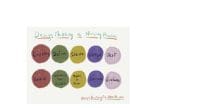The details of Florence Nightingale’s work are no secret to any nursing professional. It would be unnecessary to recount the well-known details of her legendary, albeit brief, efforts in the Crimea, which catapulted her to demigod status. Her vision has led the nursing profession not only to imagine what should be, but to realize what can be. Victorian conventions prevented Nightingale from realizing her vision earlier. Not surprisingly, when she sailed for Crimea on October 21, 1854, she was already 34 years old—a rather old age in Victorian times.
Even before her Crimean War experience, Nightingale had already established herself as a gifted lady, if not a nurse, among the health policymakers in England, owing to her family’s political ties. According to Bostridge, when the Secretary of War, Sidney Herbert, picked Nightingale as the “one person that I know of, who would be capable of organizing and superintending such a scheme” (to head the nursing delegation to the Crimea), he was well aware of Nightingale’s leadership abilities. Throughout her life, Nightingale loathed the drawing room life, and wanted to put her powers to practical use. When Nightingale accepted Herbert’s invitation, she may have known this as the moment she had been waiting for—to practice to the full extent of her capacity, in spite of the lack of formal leadership education (her official nursing training was barely 3 months). Nightingale was a born leader and the Crimean war was her litmus test.
The enormous challenge she faced is exemplified in one of her letters, a month after she set to work in Scutari. As noted by Bostridge, she recounted her daily foraging in the purveyor’s store because there were “no mops, no plates, no wooden trays, no slippers, no shoe-brushes, no blacking, no knives and forks, no basins, no toweling, no Chloride of Lime.” This lament easily illustrated her pioneering leadership to organize and establish order. The fact that there was no precedent for nursing leadership before her time made her efforts and achievements even more astonishing.
Was Nightingale a transformational or transactional leader?
The basis for analyzing Nightingale’s leadership traits is her own writings in Notes on Nursing, the reflections of contemporary nursing leaders, and various biographies. Did Nightingale practice transformational or transactional leadership? Enshrined in the American Nurses Credentialing Center’s Magnet® model, transformational leadership envisions leaders and their followers as raising one another to a higher level of morality and motivation. Transactional leadership is a behavioral model where leaders ensure that work is completed through either reward or sanction. Experts agree that the two models are not mutually exclusive and may overlap. However, in this age of leadership-by-email, the staff may see the transactional leader (a manager, really) as sending a regular to-do list electronically, while the transformational leader cultivates authentic connection through sincere listening and inspiring others. Bostridge suggests that there is evidence to indicate that Nightingale was a “relentless taskmaster, relentlessly pushing…on the merest sign of slacking pace” among her allies and subordinates. Her legend tells us she was transformational. However, the dichotomies abound in her work.
Nightingale’s leadership style (the Lady with the Lamp) has been compared to that of Margaret Thatcher (the Iron Lady). Bostridge quotes Cannadine as saying that “Long before Thatcher, Nightingale both denied and exploited her femininity to gain power in a man’s world. Long before Thatcher, Nightingale was possessed with superabundant energy, and was in a righteous rage to get things done. Long before Thatcher, Nightingale hated red tape, loathed bureaucrats, and was determined to sweep away incompetence and inefficiency wherever she found it.” This assessment of her leadership style has been the subject of both her detractors and admirers.
Transformational leadership begins with a vision for the future that the leader conveys to followers. Transactional leadership is about getting things done. It can be proposed that Nightingale vacillated between these two leadership styles. Intellectual stimulation is a key dimension of transformational style. Close supervision and corrective actions are the tenets of transactional style. On both accounts, Nightingale excelled.
Reflecting on Nightingale’s imperfections, the future nurse leader is reminded to contextualize the challenges they must overcome in an exacting and highly regulated work environment. Nightingale cautioned her readers on the pitfalls of bookish reading by saying, “Let experience, not theory decide upon this as upon all other things.” In essence, the lived-experiences of insightful leaders and not simply academic education are a more compelling source of leadership competency.
Reflective leadership
Reflection-on-practice frequently is triggered by a breakdown in clinical judgment, and is critical for the development of clinical knowledge and improvement in clinical reasoning. Reflection as a conscious, dynamic process of thinking about, analyzing, and learning from clinical experience has long been considered an essential element to building competence and comportment in the nurse education. It is indisputable that Nightingale practiced critical reflection. Her work ethic illustrates the core virtues of emotional intelligence, namely self-awareness, self-regulation, motivation, empathy, and social skills. Notes on Nursing was not intended as a manual to teach nurses how to nurse, but rather as a tool for reflection for anyone in charge of the health of others.
Nightingale valued the power of statistical data in influencing policymakers. What is curious is that the data indicating her hospital had a higher mortality rate than previously assumed was omitted in the Commissioner’s report to the Parliament partly out the Secretary of War’s refusal to taint Nightingale’s legend. What is now clear is that Nightingale wanted to include the original data to bolster her argument for sanitation and hospital construction reform. Her brilliant power of contemplation and grasp of detail are indeed fine specimens of elevated discourse that gave way to scientific writings now commonplace.
Nightingale’s knowledge of physiology is limited, and some of her ideas make no sense in our modern times. It is now generally regarded that Nightingale’s ideas were practical and not scientific. According to Bostridge, “She was unconcerned with the finer points of medical theory.” It wasn’t until 1882 when she finally acknowledged the germ theory of disease as opposed to the long-held miasmatic theory of illness. This change of heart must have humbled the ministering angel, whom some of her contemporaries regarded as unscientific, single-minded and quarrelsome. I imagine that Nightingale’s self-reflection didn’t make her too proud to adopt the latest evidence as they became available to her.
Based on her writings, Nightingale’s leadership framework can be summed up as person-centered—an homage to the person’s centrality. She was forward looking and pre-dated emotional intelligence as a core competence in leadership. Nightingale understood that to lead is to act with integrity and honesty, and cautioned that it is much more difficult to merely speak the truth than people commonly imagine.
References
American Nurses Credentialing Center. Magnet Model—Creating a magnet culture. nursingworld.org/organizational-programs/magnet/magnet-model/
Benner P, Sutphen M, Leonard V, Day L. Educating Nurses: A Call for Radical Transformation. San Francisco, CA: Jossey-Bass; 2009.
Bostridge M. Florence Nightingale: The Making of an Icon. Farrar, Straus and Giroux: New York; 2008.
Goleman D. Emotional Intelligence: Why I Can Matter More than IQ. Bantam Books, Inc.: New York; 2006.
Nightingale F. Notes on Nursing: What It Is and What It Is Not. London: Harrison; 1860
Richards A. Exploring the benefits and limitations of transactional leadership in healthcare. Nurs Stand. 2020;35(12):46-50. doi:10.7748/ns.2020.e11593
Fidelindo Lim is a clinical associate professor at New York University – Rory Meyers College of Nursing.


















